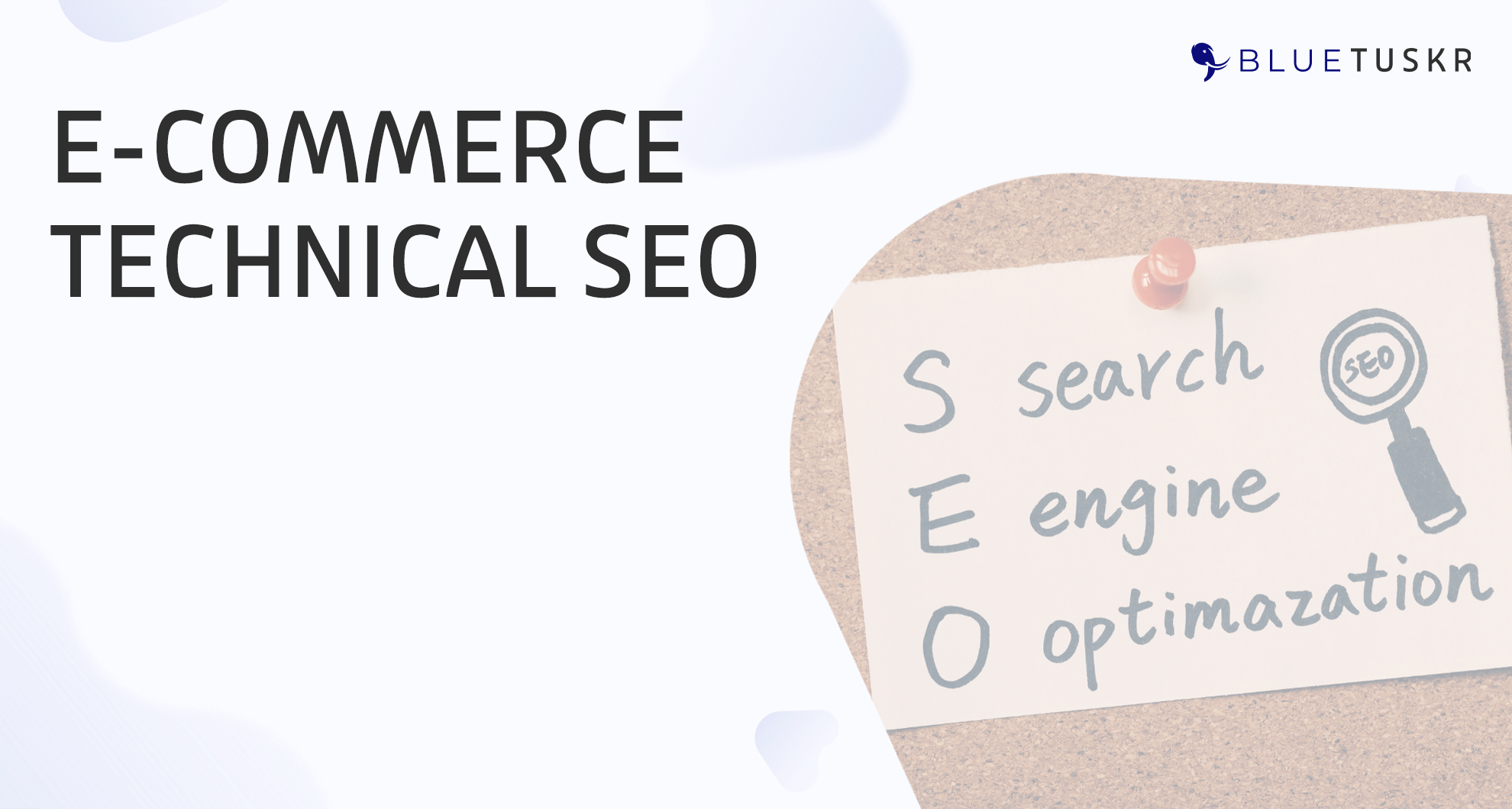
Ecommerce Technical SEO: Common Errors and How to Fix Them
With e-commerce booming globally, the competition to attract and retain online customers has never been fiercer. While aesthetic design and user-friendly navigation are vital for any e-commerce store, technical SEO forms the backbone of online visibility and search engine ranking. Technical SEO issues could quietly compromise your website’s performance, traffic, and, ultimately, the conversions you’re striving for.
This blog dives into common technical SEO errors faced by an ecommerce business and provides actionable solutions to fix them. Whether you’re an SEO specialist, e-commerce manager, or website developer, you’ll find this guide helpful in refining your site’s SEO strategy.
Understanding Technical SEO for Ecommerce
What is Technical SEO for Ecommerce Websites?
Technical SEO for ecommerce websites refers to the process of optimizing the technical aspects of an online store to improve its visibility, crawlability, and indexing by search engines. This involves a range of activities aimed at making your site more accessible and understandable to search engine bots, which in turn can boost your search engine rankings.
Key elements of technical SEO for ecommerce include optimizing your website architecture to ensure a logical and user-friendly structure, enhancing internal linking to help search engines navigate your site more effectively, and implementing structured data to provide search engines with detailed information about your products. Additionally, improving page speed and ensuring mobile responsiveness are crucial for both user experience and search engine performance.
By focusing on these technical aspects, you can create a solid foundation for your ecommerce website, making it easier for search engines to index your content and for users to find what they’re looking for.
Why Technical SEO is Crucial for E-Commerce Success
Google’s SEO algorithm cares about a lot of things- but there are two that really make an impact. First, your user’s experience. Second, it needs to be able to find all of your content. For ecommerce businesses, technical SEO helps you optimize both of these factors, ensuring your site is crawler-friendly. The result? Higher rankings, increased traffic, and better conversions!
What happens if your technical SEO takes a backseat? Well, let’s get into it.
Setting Up Your Ecommerce Site for Technical SEO
Establish a Baseline by Benchmarking Your Shop’s SEO Performance
Before diving into technical SEO optimizations, it’s essential to establish a baseline by benchmarking your current SEO performance. This involves tracking key metrics to understand where your ecommerce site stands and identifying areas for improvement. Tools like Google Analytics, Google Search Console, and SEMrush can provide valuable insights into your site’s performance.
Start by monitoring your website’s traffic, focusing on organic traffic, which represents visitors coming from search engines. Track your search engine rankings for relevant keywords to see how your site performs in search results. Additionally, pay attention to keyword rankings to understand which terms are driving traffic to your site.
Technical SEO metrics are equally important. Measure your page speed to ensure your site loads quickly, as slow-loading pages can negatively impact both user experience and search engine rankings. Assess your site’s mobile responsiveness to ensure it provides a seamless experience on all devices. Finally, check for the presence and accuracy of structured data, which can enhance your search listings with rich snippets.
By benchmarking these metrics, you can identify technical SEO issues that need to be addressed, track the effectiveness of your SEO efforts over time, and compare your performance to competitors. This process will help you set realistic SEO goals and objectives, ultimately leading to improved search engine rankings, more organic traffic, and higher conversions.
Common Technical SEO Errors and How to Fix Them
1. Slow Page Speed
Site speed is critical to search engine rankings and user satisfaction. Research shows that 53% of users abandon a website if it takes longer than 3 seconds to load.
How to Fix It:
- Use tools like Google PageSpeed Insights to monitor performance.
- Compress large images using plugins such as TinyPNG or ImageOptim.
- Enable caching to store previously loaded files.
- Minimize JavaScript and CSS code with tools like UglifyJS or CSSNano.
- Invest in a high-performance Content Delivery Network (CDN).
How fast should my page be?
Google’s recommended load time is under 3 seconds, but aim for 1.5 to 2 seconds for optimal user experience and search engine visibility.
If I fix my page speed once, do I have to fix it again in the future?
Website performance is dynamic and can be impacted by various factors. It's important to regularly monitor and optimize your site's speed to ensure it remains fast for both search engines and users.
2. Duplicate Content Issues
Managing extensive product catalogs in e-commerce often leads to duplicate content, especially on category pages, which can negatively impact search engine rankings. These errors frequently arise from multiple URLs for the same product due to filters, categories, or variations.
How to Fix It:
- Use canonical tags (rel=” canonical”) to point search engines to the preferred URL.
- Implement 301 redirects to consolidate duplicate pages.
- Utilize tools like Copyscape to scan for internal duplicate content regularly.
How does duplicate content even happen?
Duplicate content can occur due to various reasons, such as technical errors, similar product descriptions, or content copied from other websites.
How can I prevent duplicate content from the start?
It's important to have a clear and consistent URL structure, use canonical tags, and regularly scan for any duplicate content on your website.
3. Missing or Poorly Written Meta Descriptions
Meta descriptions are the brief snippets of text that appear below the page title in search engine results pages (SERPs). They play a crucial role in attracting users to click on your site. However, many e-commerce websites either have missing meta descriptions or poorly written ones that don't entice users to click through.
How to Fix It:
- Write unique meta descriptions for each product page with relevant keywords and a call-to-action.
- Keep meta descriptions under 155 characters to avoid truncation in search results.
- Avoid using duplicate meta descriptions across multiple pages.
Do I need a meta description for every product page?
While it's not necessary, having unique and well-written meta descriptions can improve your click-through rate (CTR) and ultimately lead to more conversions.
How often should I update my meta descriptions?
It's important to regularly review and update your meta descriptions as needed, especially when launching new products or making significant changes to existing ones. This will ensure they accurately reflect each page's content and continue attracting users to click through.
4. Broken Links
Nothing frustrates potential customers (and search engines) more than clicking on a link that leads to a 404 error. This not only impacts user trust but also reduces the chances of earning link equity.
How to Fix It:
- Regularly crawl your site with tools like Screaming Frog or Ahrefs to detect broken links.
- Replace broken links with updated URLs or redirect them using 301 redirects.
- Create a custom 404 error page that guides users back to relevant areas of the site.
How do broken links happen?
Broken links can occur due to various reasons, such as typos in URLs, outdated content, or technical errors. It's important to regularly check for and fix any broken links on your website.
Is there anything I can do to prevent broken links from happening?
Aside from regularly checking and fixing broken links, it's important to use proper URL structures and conduct thorough testing before launching any new pages or updates to existing ones. This will help prevent broken links from occurring in the first place.
 5. Poor Mobile Optimization
5. Poor Mobile Optimization
With over 70% of e-commerce sales coming from mobile devices, having a mobile-optimized site is non-negotiable. Unfortunately, many businesses still lag in responsive design and usability.
How to Fix It:
- Ensure your site uses a responsive design that adapts to various screen sizes.
- Use mobile-friendly testing tools like Google's Mobile-Friendly Test.
- Optimize touch elements, ensuring buttons and CTAs are easy to click.
Should I prioritize mobile optimization over desktop?
Both are important, but with the rise of mobile usage, it's crucial to prioritize mobile optimization when designing and updating your e-commerce website. A well-optimized site for desktop and mobile devices will ultimately lead to better user experience and higher conversion rates.
What's the difference between mobilizing a site versus making it responsive?
"Mobile optimization" refers to the process of optimizing a website specifically for mobile devices, ensuring that it is user-friendly and easy to navigate on smaller screens. This can include creating a separate mobile version of the site or using responsive design techniques to adapt the same content for different devices. "Responsive design" is an approach used in web design where the layout and content automatically adjust based on the device and screen size it is being viewed on.
Essentially, having a responsive website means it has been designed with all devices in mind, including desktops, tablets, and smartphones. So while mobile optimization may involve elements such as touch-friendly buttons and larger fonts for easier navigation, responsive design takes into account all devices and their unique features. Both are important for creating a user-friendly website for your e-commerce business.
6. Improper XML Sitemap and Robots.txt Configuration
A poorly configured XML sitemap and mismanaged robots.txt file can confuse search engine bots, leading to lower rankings. Proper site architecture, including well-organized XML sitemaps and correctly configured robots.txt files, is crucial for effective search engine optimization.
How to Fix It:
- Include priority pages such as product collections and categories in your XML sitemap.
- Regularly update the sitemap using tools like Screaming Frog XML Sitemap Generator.
- Review your robots.txt file to ensure you’re not inadvertently blocking important pages from being indexed.
What is an XML sitemap?
An XML sitemap is a file that lists all the pages on your website, making it easier for search engine bots to crawl and index your content. It also includes important information such as last modified date, priority, and frequency of updates for each page. Having an updated XML sitemap can improve the visibility of your site in search results.
Do I need a robots.txt file if I have an XML sitemap?
Yes, having both an XML sitemap and a properly configured robots.txt file is important for ensuring your site is crawled and indexed efficiently by search engines. The robots.txt file acts as a guide for bots on which pages they should or shouldn't crawl, while the XML sitemap helps them navigate and understand the structure of your website. It's important to regularly review and update both files as needed.
7. Lack of Structured Data
Structured data markup (such as Schema.org) helps search engines understand the content on your pages, which increases the likelihood of appearing in rich search results for ecommerce businesses.
How to Fix It:
- Implement product schema to highlight reviews, pricing, and stock availability.
- Use Google’s Structured Data Testing Tool to validate your implementation.
- Platforms like Shopify or WordPress often have plugins like RankMath or Yoast to simplify the use of structured data.
What is structured data?
Structured data refers to a specific format of organizing and labeling information on web pages in such a way that search engines can easily understand it. This helps them display more relevant and informative results for users, including rich snippets like star ratings, product prices, and availability.
Why is structured data important for e-commerce businesses?
Implementing structured data can greatly benefit e-commerce businesses by making their products stand out in search results and providing valuable information to potential customers before they visit the site.
8. Weak Internal Linking
Effective internal linking enhances user navigation and distributes link equity across your site, improving page authority and rankings.
How to Fix It:
- Conduct thorough keyword research to identify high-value search terms and use keyword-rich anchor text to create strategic internal links between product pages, blogs, and categories.
- Regularly audit your internal linking strategy with SEO tools.
- Avoid links solely for the sake of SEO. Ensure they add genuine value to users.
 How does internal linking affect SEO?
How does internal linking affect SEO?
Internal linking can have a significant impact on SEO as it helps search engine bots crawl and index your site more efficiently. By linking to relevant pages, you are providing them with a roadmap of your website's structure and hierarchy. Additionally, strategic internal linking can also improve the authority and rankings of important pages by distributing link equity throughout the site.
Are there any best practices for internal linking?
Some best practices for internal linking include using relevant anchor text, avoiding excessive links on a single page, and regularly auditing and updating your internal links. It's also important to ensure that all links add value to users and are not solely for the sake of improving SEO.
Why Partnering With Professional is a Smart Choice
Managing an e-commerce business is demanding, and technical SEO challenges can feel overwhelming. That’s where partnering with a highly seasoned marketing agency like BlueTuskr becomes invaluable.
BlueTuskr specializes in e-commerce marketing and has expertise in SEO, website optimization, and data-driven strategies to scale businesses efficiently.
Taking Your Technical SEO to the Next Level
So there you have it – the most common technical SEO issues faced by an ecommerce store and how to fix them. By addressing these challenges, you will not only improve your site’s visibility in search results but also create a better user experience for potential customers.
Whether it’s optimizing for mobile devices or implementing structured data, there is always room for improvement and growth.
Partnering with an agency like BlueTuskr can help take your technical SEO to the next level and drive tangible results for your e-commerce business. Ready to break through the technical SEO obstacles and skyrocket your business? We are- contact us today!
Connect With Us
Recent Post

.png)





Tell us what you think!